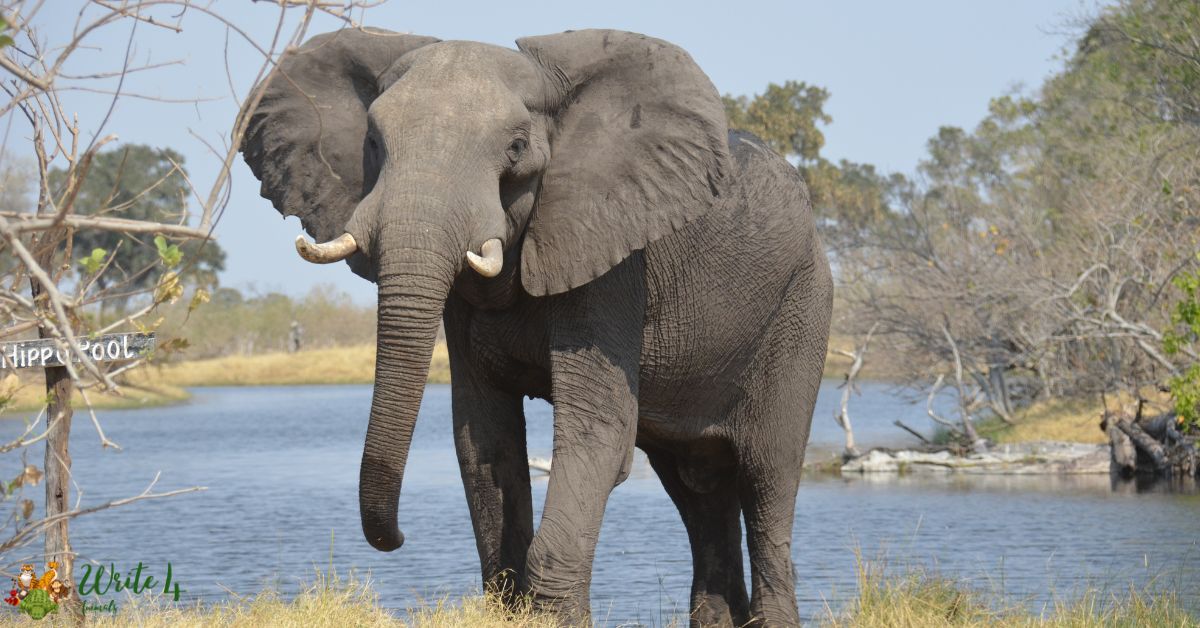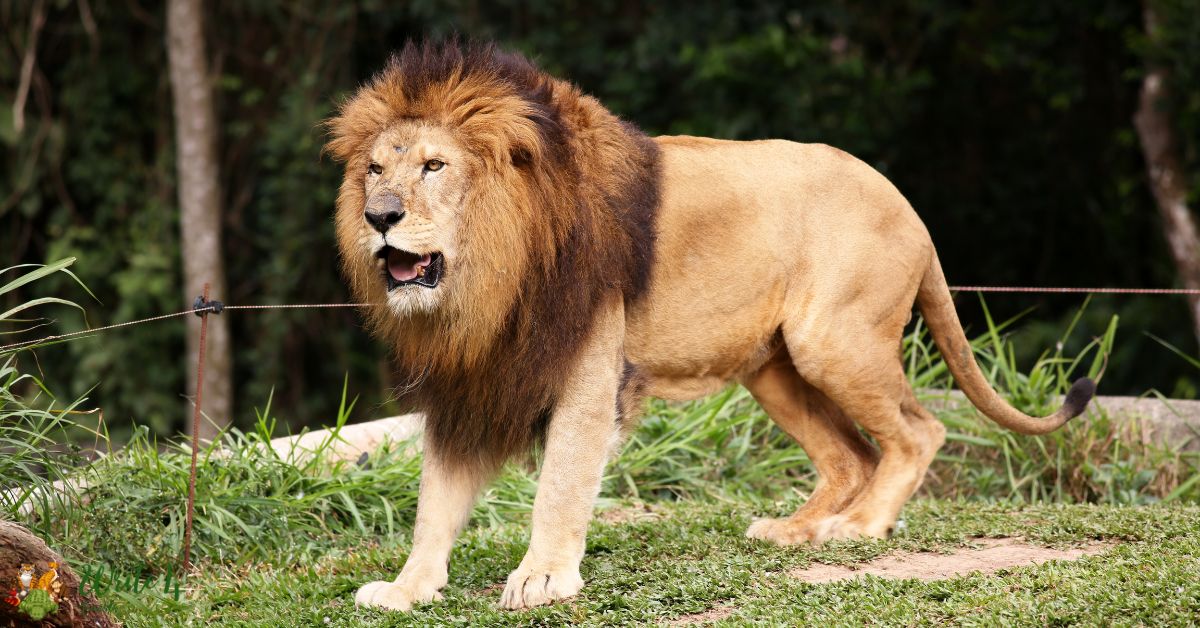Nature has bestowed our planet with an incredible diversity of wildlife, each species playing a unique role in maintaining the delicate balance of ecosystems. Among the most majestic and awe-inspiring creatures are the elephant and the lion. These giants of the animal kingdom evoke both fascination and fear, with their distinctive characteristics and roles in the wild. In this blog post, we will delve into everything you need to know about the epic clash between the elephant vs lion, exploring their habitats, behaviors, and the intriguing dynamics of their coexistence.
Elephant vs Lion Comparison
Elephant vs Lion: History and Origins
Elephants and lions are two iconic animals that have captured human imagination throughout history. These magnificent creatures have fascinating origins and play vital roles in their respective ecosystems.
Elephants belong to the family Elephantidae, with three extant species: the African bush elephant, the African forest elephant, and the Asian elephant. These gentle giants have a rich evolutionary history that dates back millions of years. They are native to Africa and Asia, with African elephants inhabiting diverse habitats ranging from savannas to forests, while Asian elephants are found in tropical and subtropical regions.
Lions, scientifically known as Panthera leo, are members of the Felidae family. They have a remarkable historical significance, with depictions of lions dating back to ancient civilizations such as Egypt and Mesopotamia. Lions are indigenous to Africa, particularly the grasslands and savannas. They have experienced a significant decline in their range and population over the years due to habitat loss and human-wildlife conflicts.
Elephant vs Lion: Physical Features
Elephants are known for their colossal size, with adult males being the largest land animals on Earth. African elephants are larger than their Asian counterparts. They have thick, wrinkled skin that helps them regulate body temperature and protect against insects.

Elephants possess a long trunk, which is a fusion of their upper lip and nose. Their elongated incisor teeth, known as tusks, are present in both male and female African elephants but are more prominent in males. Asian elephants have smaller tusks, and some individuals lack them altogether.
Lions are majestic big cats with a muscular build. They exhibit sexual dimorphism, with males being larger and heavier than females. Male lions are distinguished by their impressive manes, which vary in color and size depending on the individual and the population. They have sharp retractable claws and powerful jaws equipped with large canine teeth. Lions have a tawny coat, blending in with their grassland habitats, and their coloration can vary between individuals and populations.
Elephant vs Lion: Combat Skills
Elephants are not typically aggressive animals but can become formidable opponents when threatened. Their sheer size and strength make them capable of inflicting significant damage. When faced with danger, elephants may employ defensive behaviors such as trumpeting, charging, or using their tusks to fend off attackers. Their tusks, which are elongated incisor teeth, can be used as powerful weapons for protection or in territorial disputes. Elephants are also known for their ability to deliver powerful kicks and use their trunk to strike or push adversaries.
Lions are known for their predatory prowess and excellent combat skills. They possess sharp retractable claws that they use to grip and bring down their prey. Lions are strong and agile, capable of running at high speeds for short distances and leaping great distances. In confrontations, they employ tactics such as stalking, ambushing, and cooperative hunting strategies within their pride. Male lions, with their larger size and strength, often engage in territorial battles or fights over mating rights. They utilize their powerful forelimbs, teeth, and jaws to overpower adversaries.
Elephant vs Lion: Behavior and Social Structure
Elephants are highly intelligent and social animals, known for their complex social structures. They form tight-knit family groups called herds, led by the oldest and most experienced female, known as the matriarch. These herds consist of related females and their offspring. Male elephants typically live solitary lives or form temporary bachelor groups. Communication within elephant herds is intricate, involving a variety of vocalizations, body language, and the use of their trunk to touch and smell each other.
Lions are social animals that live in groups known as prides. A pride typically consists of several related adult females, their offspring, and a coalition of males. The females work together in hunting and raising the young.

Male lions play a protective role, defending the pride against intruders and maintaining dominance within their territory. Lions communicate through vocalizations such as roars, growls, and grunts, which serve to establish their presence and maintain social bonds within the pride.
Elephant vs Lion: Hunting and Diet
Elephants are herbivorous animals with a unique diet consisting mainly of vegetation. They are bulk feeders, consuming large quantities of grasses, leaves, bark, fruits, and even branches. Elephants use their strong trunks to pluck, tear, and grasp plant matter, which they then chew using their large molar teeth.
Their digestive system is specialized to process fibrous plant material, extracting nutrients efficiently. Despite their massive size, elephants have a relatively low metabolic rate, allowing them to survive on a diet that may seem insufficient for their energy requirements.
Lions are apex predators and carnivores, primarily relying on a meat-based diet. They are opportunistic hunters, targeting a variety of ungulates such as zebras, wildebeests, buffalo, and antelope. Lions employ stealth and teamwork during hunts, often utilizing their cooperative nature to bring down larger prey.
While they primarily rely on fresh kills, they may scavenge when necessary, taking advantage of the remains of other predators’ kills. Lions have strong jaws and sharp teeth designed for tearing meat, enabling them to consume both flesh and bones.
Elephant vs Lion: Key Differences
Elephants are enormous, herbivorous mammals that inhabit diverse habitats across Africa and Asia. They are known for their iconic tusks, long trunks, and thick, wrinkled skin. Elephants have a complex social structure and exhibit high levels of intelligence and emotional intelligence. They are highly adapted for their herbivorous lifestyle, with specialized teeth, a unique digestive system, and an intricate communication system.
Lions are powerful carnivorous predators that are native to Africa’s grasslands and savannas. They are the only big cats that live in social groups known as prides. Male lions have a distinctive mane, and both males and females possess sharp teeth and retractable claws. Lions are skilled hunters that employ cooperative hunting strategies, taking down a wide range of prey. They have a robust build, excellent agility, and powerful vocalizations, including their iconic roars.
Elephant vs Lion: The Key Factors in a Fight
In a hypothetical encounter between an elephant and a lion, several key factors come into play.
Size and Strength: The elephant possesses a significant advantage in terms of sheer size and strength. Adult elephants can weigh several tons, making them formidable opponents. Lions, although strong and agile, are comparatively smaller and lighter.
Defensive Capabilities: Elephants have a natural defense mechanism due to their size and physical attributes. They can use their tusks and trunk to fend off attackers, and their massive body can act as a physical barrier. Lions rely on their speed, agility, and hunting skills, but their ability to defend themselves against such a large adversary is limited.
Social Behavior: Elephants are known for their complex social structures and often live in family groups that can provide protection and support. Lions, on the other hand, rely on their prides for cooperation in hunting and defense. In a fight, an elephant’s potential support from other members of its group could tip the balance in its favor.
Elephant vs Lion: Who Would Win in a Fight?
Determining the outcome of a hypothetical fight between an elephant and a lion is challenging and depends on various factors. While the lion is an agile predator with sharp teeth and claws, the sheer size and strength of an elephant can give it a significant advantage. The elephant’s thick skin, large body, and potential support from its herd can make it a formidable adversary. However, it’s important to note that such encounters are rare in the wild, as these animals inhabit different ecosystems and have distinct behaviors and roles in their respective habitats.
Frequently Asked Questions
[sc_fs_multi_faq headline-0=”h4″ question-0=”Are elephants and lions found in the same regions?” answer-0=”Elephants are found in both Africa and Asia, while lions are primarily found in Africa. There is limited overlap in their distributions, with some regions in Africa where both elephants and lions can be found.” image-0=”” headline-1=”h4″ question-1=”Do elephants and lions ever fight each other in the wild?” answer-1=”It is extremely rare for elephants and lions to engage in direct confrontations in the wild. Their habitats and behaviors are different, and they typically do not share the same territories. While elephants may exhibit defensive behavior if they feel threatened by lions, direct fights between the two species are uncommon.” image-1=”” headline-2=”h4″ question-2=”Can lions take down a full-grown elephant?” answer-2=”Lions are not typically known to take down full-grown elephants. Adult elephants are much larger and more powerful than lions, making it challenging for lions to overpower them. Lions are more likely to target younger or injured elephants, as well as prey species that are smaller and more manageable. ” image-2=”” headline-3=”h4″ question-3=”What are the main threats to elephants and lions?” answer-3=”Both elephants and lions face significant threats in the wild. Elephants are primarily threatened by habitat loss, poaching for their ivory tusks, and human-wildlife conflicts. Lions are also affected by habitat loss, as well as retaliatory killings due to conflicts with livestock farmers. Conservation efforts are crucial to protect these species and mitigate the threats they face.” image-3=”” headline-4=”h4″ question-4=”Are elephants and lions endangered?” answer-4=”African elephants are considered vulnerable, while Asian elephants are classified as endangered. Lions are listed as vulnerable. These classifications indicate that these species are facing significant population declines and are at risk of extinction if conservation measures are not implemented.” image-4=”” headline-5=”h4″ question-5=”Are elephants and lions social animals?” answer-5=”Yes, both elephants and lions are social animals, but their social structures differ. Elephants live in complex family groups called herds, led by a matriarch. Lions live in prides consisting of related females, their offspring, and a coalition of males. Both species exhibit social behaviors and rely on cooperation within their respective groups. ” image-5=”” headline-6=”h4″ question-6=”Are elephants and lions in captivity?” answer-6=”Yes, elephants and lions are sometimes held in captivity in zoos, wildlife reserves, and sanctuaries around the world. While captive environments can provide care and protection, it is important to ensure that the animals’ needs are met and that conservation efforts prioritize the preservation of their wild populations.” image-6=”” headline-7=”h4″ question-7=”Can elephants and lions be domesticated?” answer-7=”Elephants have been historically domesticated in some Asian countries for various purposes, such as transportation and logging. However, lions are not suitable for domestication due to their natural behaviors, wild instincts, and specific habitat requirements.” image-7=”” count=”8″ html=”true” css_class=””]
Recommended
1. What Does Chipmunk Poop Look Like? | chipmunk poop pictures
